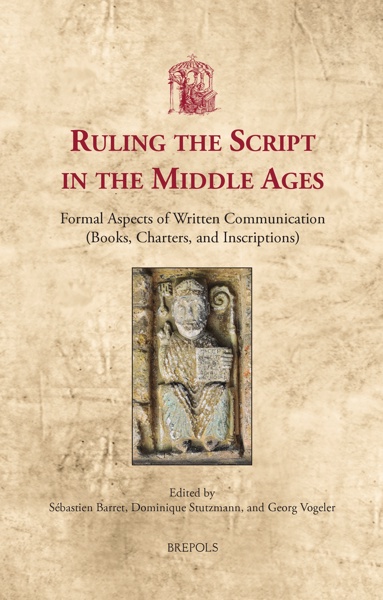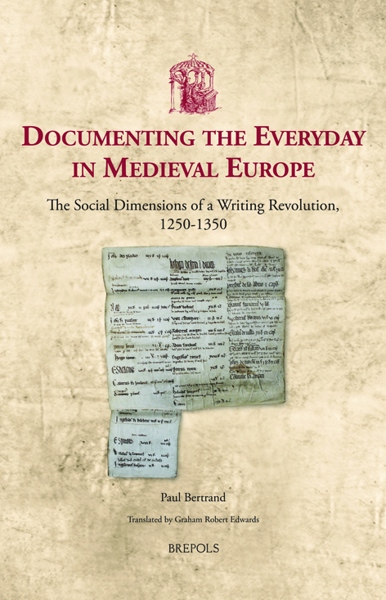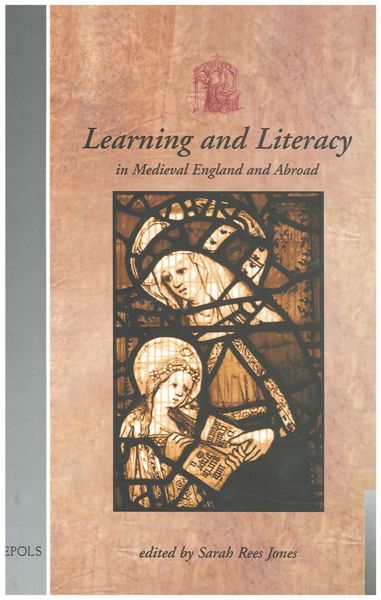
Uses of the Written Word in Medieval Towns
Medieval Urban Literacy II
Marco Mostert, Anna Adamska (eds)
- Pages: xx + 453 p.
- Size:156 x 234 mm
- Illustrations:25 b/w
- Language(s):English
- Publication Year:2014
- € 120,00 EXCL. VAT RETAIL PRICE
- ISBN: 978-2-503-54960-6
- Hardback
- Available
- € 120,00 EXCL. VAT RETAIL PRICE
- ISBN: 978-2-503-55008-4
- E-book
- Available
"Indeed, these two volumes represent a remarkable achievement, offering readers a sens of the state of the question regarding important aspects of urban literacy across a vast swath of Europe over a period of three centuries. These essays will be particularly helpful to specialists in medieval history who do not otherwise have access to scholarship in Dutch, Hungarian, and Polish, as well as the Scandinavian languages." (David Bachrach, in: The Medieval Review, January 2015, [15.01.02] - reviewed at the same time: Writing and Administration of Medieval Towns: Medieval Urban Literacy I, M. Mostert & A. Adamska (eds.), Brepols Publishers, ISBN 978-2-503-54959-0)
"Insgesamt gesehen knüpft diese Fortsetzung nahtlos an den vorigen Teil an. Sie ist besonders für an Osteuropa interessierte Leser von Interesse und bietet reichhaltigen Diskussionsstoff zur Rolle deutscher Minderheiten. Beachtenswert sind vor allem historiografische Überblicke, Ergebnisse zu Mehrsprachigkeit und zur gleichzeitigen Verwendung unterschiedlicher Alphabete. Beide Bände machen Lesern, die nicht über Kenntnisse slawischer Sprachen verfügen, neuere Forschungsergebnisse zugänglich." (Gisela Naegle, in: Francia Recensio, 2015/1)
"(...) the book provides an excellent, wide-ranging, and well expressed study of municipal writings and of the development of literacy in both Central, Northern, and Eastern Europe" (John R. C. Martyn, in: Parergon, 32.1, 2015, p. 301-302)
“This publication is an important contribution to the study of urban literacy, looking at the phenomenon from different points of view, using all types of sources in a wide range of areas.” (Eef Dijkhof, in Speculum, 91/4, 2016, p. 1146)
« Par leur diversité géographique et méthodologique, ces deux volumes atteignent largement leur objectif et s’inscrivent parfaitement dans la série USML. » (Valeria Van Camp, dans Le Moyen Âge, 3-4, 2017, p. 683)
In medieval towns, examples of personal writing appear more prevalent than in non-urban spaces. Certain urban milieus participating in written culture, however, have been the focus of more scholarship than others. Considering the variety among town dwellers, we may assume that literacy skills differed from one social group to another. This raises several questions: Did attitudes towards the written word result from an experience of the urban educational system? On which levels, and in which registers, did different groups of people have access to writing? The need and the usefulness of written texts may not have been the same for communities and for individuals. In this volume we will concentrate on the town dwellers’ personal documents. These documents include practical uses of writing by individuals for their own professional and religious ends, including testaments and correspondence. Besides written records belonging to the domain of ‘pragmatic literacy’, other kinds of texts were also produced in town. Was there any connection between practical literacy, literary (and historical) creativity and book production?
Preface
Maps
Introduction — MARCO MOSTERT and ANNA ADAMSKA
Part I: Alphabets and Languages: Multi-Ethnic and Multilingual Urban Literacies
Urban Communes, Ethnic Communities, and Language Use in Late Medieval Red Ruthenian Towns — ANDRZEJ JANECZEK
Non-German Literacy in Medieval Livonia — ANTI SELART
Away with the Germans and Their Language? Linguistic Conflict and Urban Records in Early Fourteenth-Century Cracow — ANNA ADAMSKA
Linguistic Tensions between Germans and Natives in Scandinavia Compared to Eastern Europe — ARNVED NEDKVITNE
Cyrillic and Latin Script in Late Medieval Vilnius — JAKUB NIEDŹWIEDŹ
Part II: Making Books and Telling Stories: Book Production and Urban Historiography
The Role of Cities in Medieval Book Production: Quantitative Analyses — ELTJO BURINGH
Books and Booksellers in the Cities of the Crown of Aragon: The Example of Barcelona — J. ANTONI IGLESIAS-FONSECA
Libri suspecti, libri prohibiti: Wycliffite and Hussite Writings in Fifteenth-Century Polish Towns — PAWEŁ KRAS
The Problem of Origins in Early Communal Historiography: Pisa, Genoa, and Milan Compared — MICHELE CAMPOPIANO
Writing about the Past of a Country from the Communal Viewpoint: Features, Models, and Examples in Croatian Humanist Historiography — IVA KURELAC
Part III: Individuals Resorting to Writing: Memoria and Business
Spoken and Written Words in Testaments: Orality and Literacy in Last Wills of Medieval Transylvanian Burghers — MÁRIA LUPESCU MAKÓ
Urban Testaments in Poland: Research Present and Future — JAKUB WYSMUŁEK
Remembrance and Literacy: Memorial Practices of the Secular Clergy in Fifteenth-Century Bruges — HENDRIK CALLEWIER
The Nuremberg Familienbücher: Archives of Family Identity — KARIN CZAJA
Part IV: Reading, Seeing, Hearing: The Place of Writing in the System of Urban Communication
Communication in a Town: Urban Rituals and Literacy in the Medieval Kingdom of Hungary — DUŠAN ZUPKA
Drama and Urban Literacy: Recording and Documenting the Performance in the Southern Low Countries (Fifteenth-Sixteenth Centuries) — KATELL LAVÉANT
Texts on Public Display: Strategies of Visualising Epigraphic Writing in Late Medieval Austrian Towns — ANDREAS ZAJIC
Whither the Study of Medieval Urban Literacy? — MARCO MOSTERT and ANNA ADAMSKA




